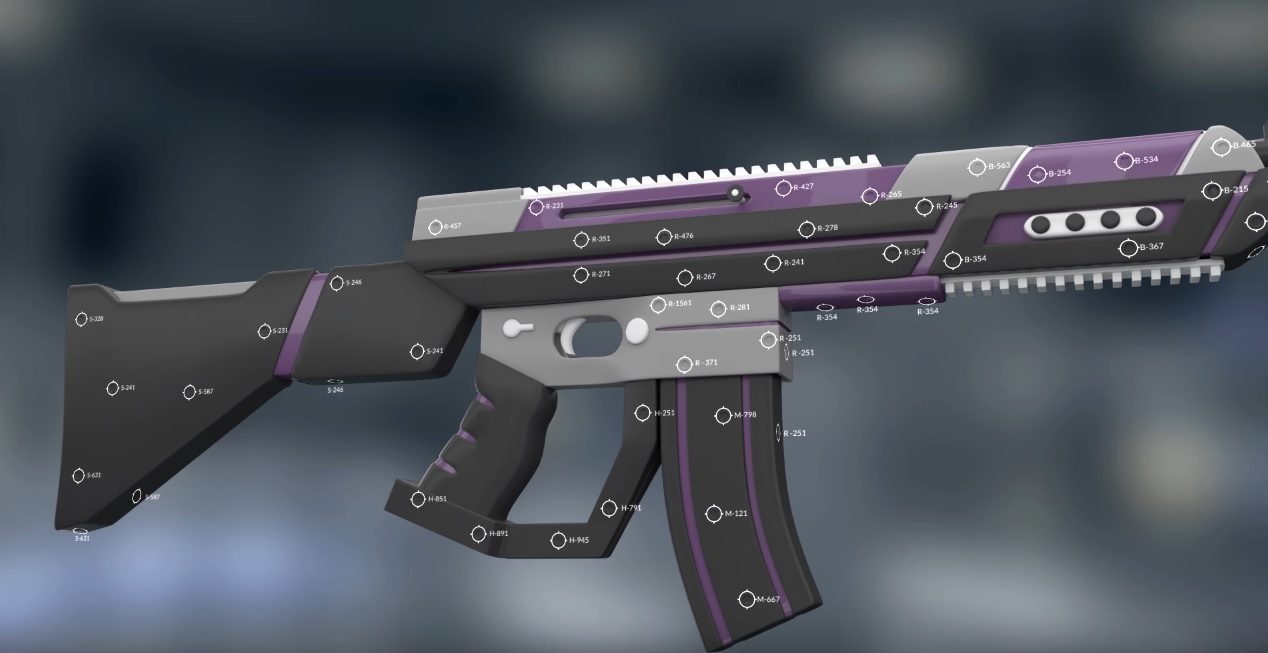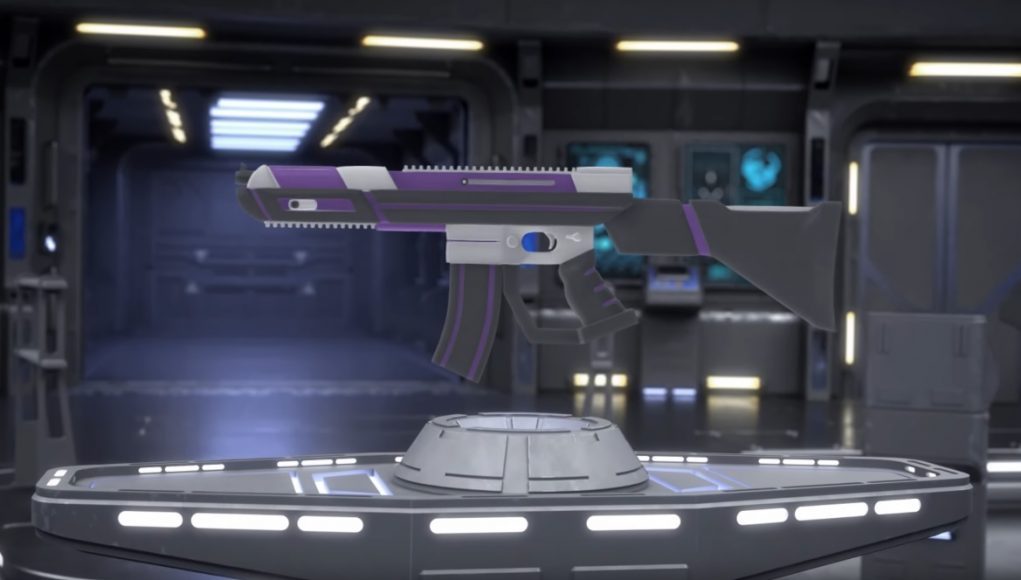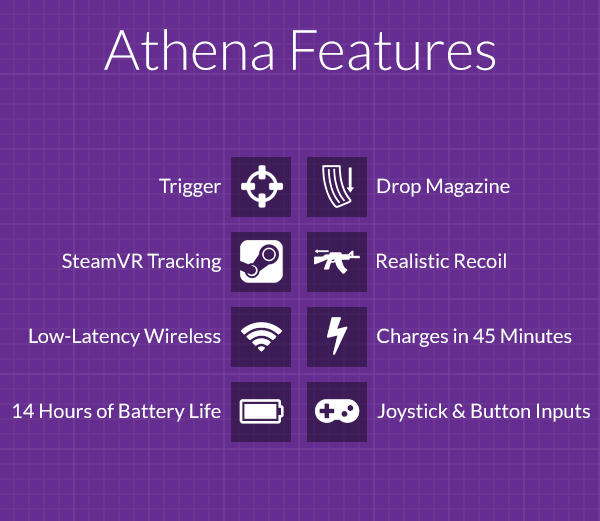Ilium VR are working on a new VR-centric gun peripheral which plans to use Valve’s SteamVR ‘Lighthouse’ tracking to bring realistic weapon control to virtual reality games.
Shooting things in games is cool. Shooting things in VR can be infinitely cooler. Add in a dedicated controller that gives you the physical feel of a weapon and add tracking and peripheral functionality to it and you have something that has the potential to take shooting things to the next level.
Ilium certainly think so as they already begun a crowdfunding campaign to kick off their plans to build a virtual reality-centric gun peripheral to be powered by Valve’s Lighthouse tracking system. Athena is the peripheral’s name and it will come in the form of a futuristic looking assault rifle.
For clarity, outside of the design renders seen in the above promotional video, the rifle peripheral being demonstrated is not Athena but Ilium VR’s earlier VR gun dev kit “The Persuader”, modeled on the M1A1 Thompson ‘Tommy Gun’ and using a rudimentary mount for a standard SteamVR controller in order to leverage its tracking.
The Athena is an altogether more ambitious beast and promises recoil action, the ability to reload via a magazine pull-out / pull-in action, whilst also integrating standard joystick and button inputs. What makes the device interesting however is the team’s plans to integrate Valve’s ‘open’ SteamVR ‘Lighthouse’ tracking functionality into the device. Basically, the final peripheral would be clustered with sensors to enable the gun to detect the sweeps from SteamVR’s laser base stations, and as with the packed-in SteamVR controllers, beaming that data wirelessly for a compatible game to map to in game actions.
We reported recently that Valve’s long awaited plans to open up the Lighthouse platform to form a tracking standard of sorts for developers and manufacturers had finally begun in earnest. Valve announced just prior to the company’s Steam Dev Days event that it’s already licensed Lighthouse tracking to some 300 companies, royalty free since it’s original announcement back in august. According to Valve, the company are gearing up to show off “new VR peripherals” which will be made available for “demonstration and design collaboration with attendees,” at some point in the future.
The Athena is one of the first gaming specific product we’ve seen to take advantage of Valve’s new initiative and it’s a brave move. Traditionally, peripherals for gaming have rarely fared well. Gaming systems (including the SteamVR powered HTC Vive of course) ship with standard controllers allowing developers to target them and hone their software knowing that everyone who buys their game or application will own those devices. 3rd party peripherals on the other hand require the manufacturer to acquire interest and support from those same developers to add in legacy support for the proprietary device. The Catch 22 situation of course is that, developers don’t want to commit resources to build around a device few customers own and customers won’t buy hardware without software support.
 Illium are of course aware of this and have tried to mitigate the issue by entered into a partnership with Invrse Studios (The Nest) and Vertigo Games (Arizona Sunshine) who will both include updates to add native support for Athena to their games. A good start indeed.
Illium are of course aware of this and have tried to mitigate the issue by entered into a partnership with Invrse Studios (The Nest) and Vertigo Games (Arizona Sunshine) who will both include updates to add native support for Athena to their games. A good start indeed.
Athena is currently being offered via an Indiegogo campaign with a lofty $100,000 funding target. Backers can notionally get their hands on a single gun along with The Nest and Arizona Sunshine for $300. The device itself has a timeline for delivery of December 2017. The campaign seems troubled currently however, with just over $4000 of that goal currently met. It’s not clear how key the funding is to progress of the product.
It’s an interesting project and one we hope to see more of in the future, especially if the Ilium team manage to square the peripheral support issue mentioned above. However it does join Stryker, another VR-centric peripheral featuring impressive recoil, in the same space. We’ll watch with interest to see how much traction both projects gain in the future.








